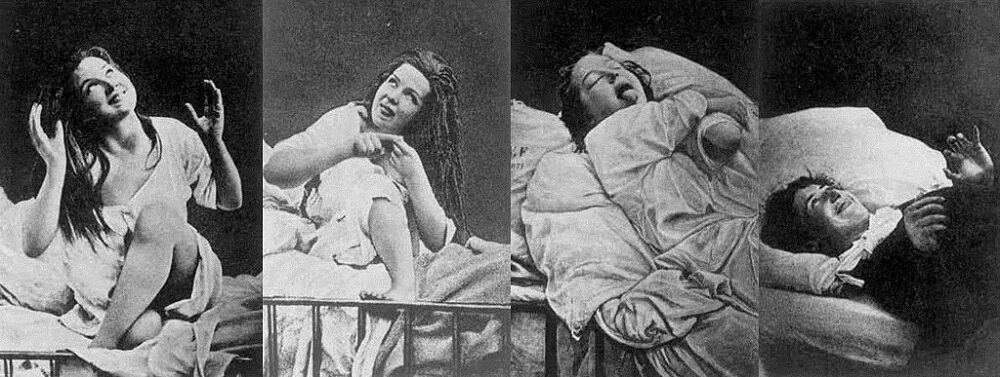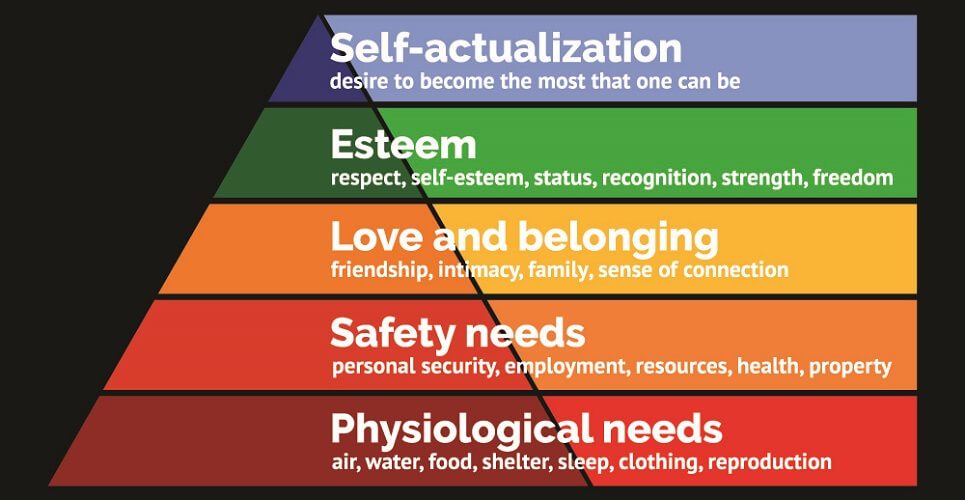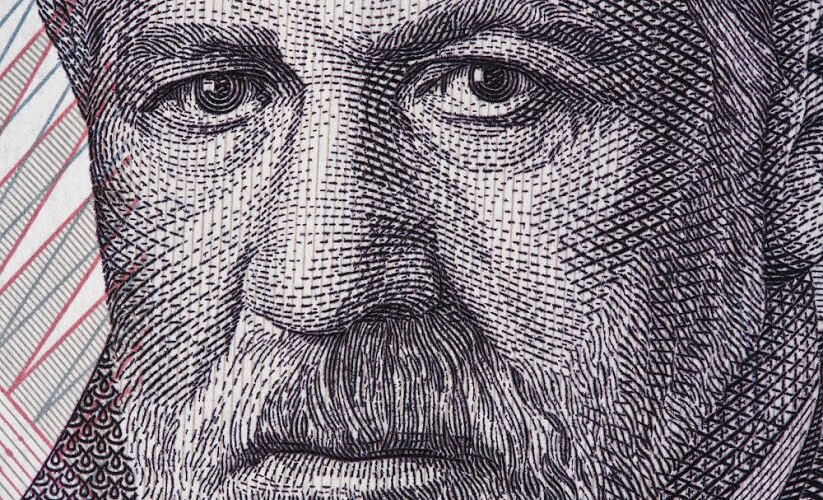Definition
Sigmund Freud’s psychoanalytic theory of personality development tells us that human personality is the result of three different but fundamental structures – the id, the ego, and the superego. Psychoanalytic theory concentrates on awareness levels combined with our experiences in early childhood that together can form the basis of certain mental disorders. Many modern psychotherapists no longer use this century-old method as it has many flaws.
What is Psychoanalytic Theory?
Freud’s psychoanalytic theory explains human personality as a series of stages that is formed through inner conflicts. It is an unfalsifiable theory – it is very difficult to prove or disprove.
Freud theorized about how unconscious conflicts occur between components of the human mind – the id, ego, and superego. Our levels of consciousness – in his words, consciousness, preconsciousness, and unconsciousness – also interfere with these three components. As most of Freud’s research was in the field of hysteria as well as what we now refer to as post-traumatic stress, this theory certainly does not apply to everyone in the same way.

As a theory, psychoanalysis has a place in current psychotherapy but is now seen to contain only partial truths. Freud saw how emotional upsets can cause physical symptoms and talking about the psychological cues for these symptoms often helped to reduce them.
Levels of Consciousness
Psychoanalytic theory stages and components also depend upon how conscious or aware we are at a certain point in time. Freud divided human awareness into the principles of conscious, unconscious, and preconscious thought.
Conscious thought is what you are experiencing as you read this article. You are aware of what you are reading, you understand the words; the topic of psychoanalytic theory is at the forefront of your mind. At the same time, you may be listening to music or can hear someone talking on the phone in the next room. As you read this article, you might also be planning what you will prepare for supper. Whether in the front or back of your mind, all of these are examples of conscious thoughts.

Memories make up our preconscious thoughts and are easily (or relatively easily) retrieved. Think of the name of your grandfather or your first pet and you are using your preconscious. The same applies to the passwords you have not automatically saved to your mobile devices. Most thought-related data in our brains is preconscious thought.
It is the unconscious that plays a major role in mental illness according to Freud’s psychoanalytic theory. These are hidden memories that we have, at some point, tried to forget. The reasons why we try to hide these memories are usually negative – guilt, shame, pain, discomfort, and fear. To live a normal life, it is easier to let such thoughts go; however, they still have a huge impact on how we behave throughout life.
Other unconscious thoughts are very basic and instinctive from the moment we are born – to survive, we must ensure that certain requirements are fulfilled.
Id
According to Freud, our minds are the result of three central components called the id, ego, and superego. All of these interact to make us behave in similar ways and as individuals.
The id is the most basic of these components and describes instinctive responses. Every part of the personality present at birth is composed of the id. This is the drive that keeps the human species alive and responds to our primitive urges and needs. It is, therefore, the driving force of our personality. Without it, we would not survive.

Freud saw the personality of a newborn as pure id; this component remains in the human mind throughout life but makes space as the other two components develop.
Very little can be done to change the id – it is a fixed entity. We must survive. This means the id is an unconscious component; when a newborn is hungry it will cry until it has been fed. It does not worry if its parents must wake in the middle of the night; it is unable to wait for an appropriate time; it does not consider whether food is available or not.
This is why the id is driven by the pleasure principle – instinctive behaviors that immediately seek pleasure and/or avoid pain. When the id is under stress, this stress must be alleviated as quickly as possible. It is a selfish trait.
Sexual reproduction – the libido – is also part of the id. Any behavior that contributes to survival either for an individual or for a species is included in unconscious, innate behavior.
Ego
As we grow older, we learn more about the world around us. While a baby will scream until it is fed, a toddler can learn that this need will be met when he or she is washed and dressed, for example.

The ego operates according to the reality principle, usually by way of compromise. The line between id and ego is blurred; the latter has the capacity to regulate the former.
Our ego is present in every level of awareness. It is also geared towards pleasure-seeking and pain-avoiding behavior but considers other things. Repressed thoughts are often repressed because we know that certain actions will lead to punishment. Our many defense mechanisms are based upon the ego – denial, fantasy, projection, and regression, for example.
When we think of ego, we should not imagine it in the modern sense of the word (a heightened sense of self-importance) but as a combination of judgment and self-control. It should also be made clear that the ego concerns selfish behavior – we compromise to avoid pain or because controlling the id will ultimately be of benefit. In other words, someone decides not to steal for a purely selfish reason – not because they do not wish to cause anxiety to another person, but because they do not want to get caught.

Superego
The superego of Freud’s psychoanalytic theory is centered on the conscience. Conscience is the result of learned behavior that evolves through the influence of the people around us. Someone brought up to believe that stealing is wrong will not steal even if they are assured that no-one will be hurt. All human belief systems and cultures depend on the capacity of the human superego, from religious law to personal dietary choices.

For most of us, parents are the initial source of superego development. As their influence recedes, responsibility is passed on to teachers, colleagues, and friends. A child’s superego is nearly always identical to that of its parents.
Unlike the ego, the superego is the opposite of the id. It is rarely selfish. People with an over-developed superego will put the needs of others first. Even so, all three components work together. The line between ego and superego is blurred as both depend on two factors – the low capacity of a child to come up with its own logic and reasoning, and the Oedipus complex. This complex refers to a child’s unconscious desire for the opposite-gender parent and jealousy toward the same-sex parent. Most psychotherapists believe that Freud placed too much significance on this part of his psychoanalytic theory.

The Psychoanalytic Theory Iceberg
Sigmund Freud likened his psychoanalytic theory to an iceberg, where the majority of our thoughts lie hidden. The tip of the iceberg represents conscious thought. Just underneath the water-line, the preconscious is visible. At a deeper level, hidden from view, is the unconscious mind.

The id is part of the unconscious and we are hardly aware of the effect these thoughts have on our behavior. The ego stretches between the iceberg tip and just under its surface – conscious and preconscious thought. The superego spans the entire iceberg and is composed of all three types of awareness.
Psychoanalytic Theory Stages
According to Freud, sexual psychoanalytic theory stages are formed throughout childhood and young adulthood. He called these the psychosexual stages of development:
- Oral; birth to one year; libido is centered in the mouth; leads to thumb sucking, smoking, nail-biting, and other oral behaviors when stressed; id period.
- Anal; one to three years; libido is centered on the anus (defecation); methods of potty training may cause obsessive tidiness, stubbornness, swearing, and one’s attitude toward authority; ego period.
- Phallic; three to six years; libido is centered in the genitals; leads to erotic attraction, jealousy, fear of rejection; Oedipus complex period.
- Latency; six years to puberty; dormant period leads to the channeling of sexual energy into studies, friends, and pastimes; ego and superego period.
- Genital; puberty to adult; libido is centered on shared sexual pleasure rather than selfish (phallic stage); finding the right partner or sexual perversions; superego period.

Psychoanalytic Theory of Dreams
Sigmund Freud’s psychoanalytic theory of dreams takes into account that when we sleep, our brain reorganizes our thoughts. Whether we remember our dreams or not, we all dream. Freud saw these as a continuation of his psychoanalytic theory; dream interpretation could, therefore, explain individual behaviors.

Freud split dreams into two components – materials and their interactions. Dreaming of a flower does not have a universal meaning as everyone has a different perspective and attached memories to an object. It is, therefore, important to first find out the personal meanings behind dreams.
As most dreams reflect personal experiences, desires, and traits, Freud used dream interpretation to give more insight into a person’s thought processes. He believed that open communication regarding the id, ego, and superego can help mental illness; modern cognitive and behavioral therapies agree.
In the psychoanalytic theory of dreams, Freud believed every dream is “the fulfillment of a wish”. He emphasized the importance of the latent dream – or the part of a dream that has a psychological meaning and is often hidden from the conscious mind.
The part of a dream you remember upon waking he referred to as a manifest dream. According to Freud, only a latent dream can give true insights into the workings of the individual mind.
Psychoanalytic Theory Examples
Psychoanalytic theory examples are countless. Even if Freud’s original theory is no longer universally accepted, modern psychoanalysis has developed from his research and writings. Maslow’s Hierarchy of Needs, Erikson’s Stages of Development, Piaget’s Cognitive Theory of Development, and Kohlberg’s Moral Development theories all have their roots in Freud’s original version.

Id examples correspond to basic survival. Hunger creates a desire for food, thirst for water, the drive to reproduce becomes an act of sexual intercourse, and danger makes us fight or run.
Ego examples counteract the urgency of the desires of the id in the understanding that this will eventually benefit the person (not others). Feeling hungry will not initiate an immediate, desperate search for any food available – a person might take the time to plan and prepare a tasty meal instead. Fantasizing about a huge glass of cold water when thirsty and far from a water supply might temporarily alleviate the id’s need for instant gratification. Waiting to find a long-term (and potentially beneficial) partner could help to repress the libido.
Superego examples all involve our sense of right and wrong. I do not steal because this is one of the Ten Commandments; I do not eat meat because I believe it is wrong to kill animals; I want to post a picture of myself and my friends on Facebook but I know that one of my friends does not want me too, so I won’t.

A much-quoted psychoanalytic theory in literature example is found in the Lord of the Rings trilogy by J.R.R. Tolkien. Both the book and movie are full of Freudian representations, including the trio of Gollum, Frodo, and Samwise. These characters represent the id, ego, and superego respectively. Gollum lives according to instinct – he desires the ring. Frodo also wants the ring due to a selfish need but can control his behavior (for example, by placing the ring on a string around his neck). Samwise is the conscience of this small group, always putting Frodo and his part in the mission to destroy the ring far above his personal desire to return to his beloved Shire.


